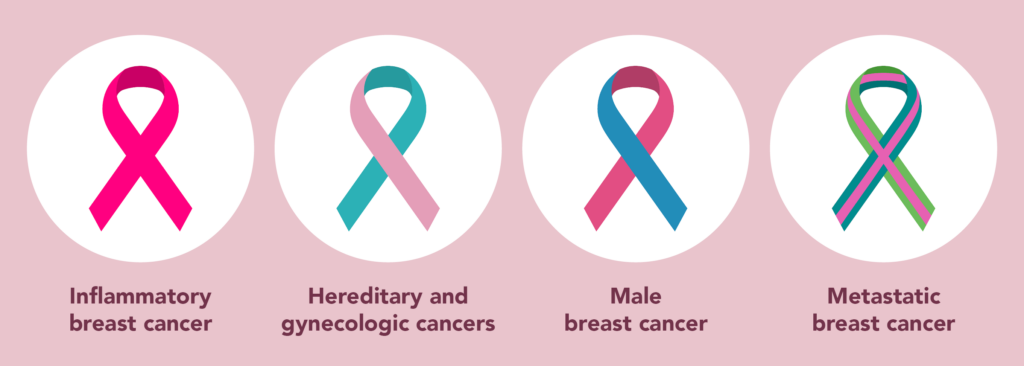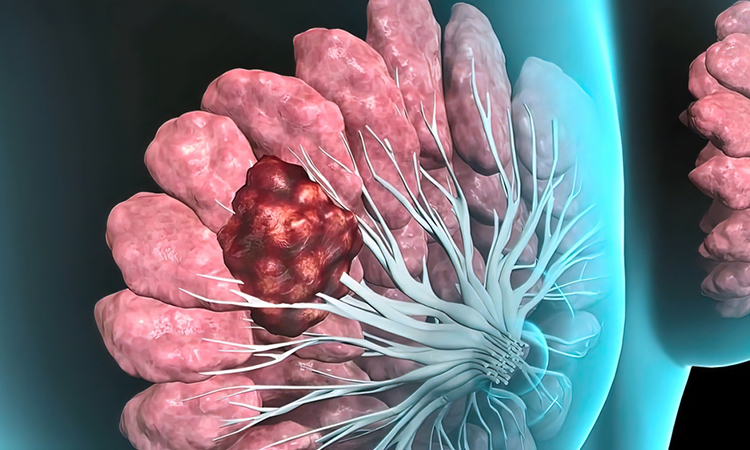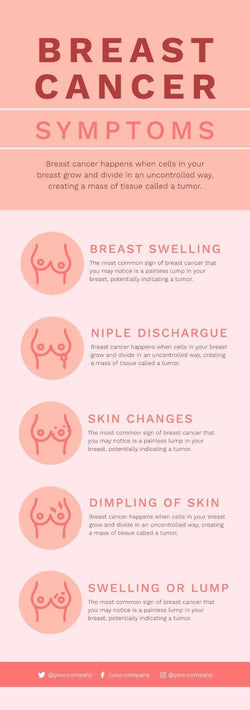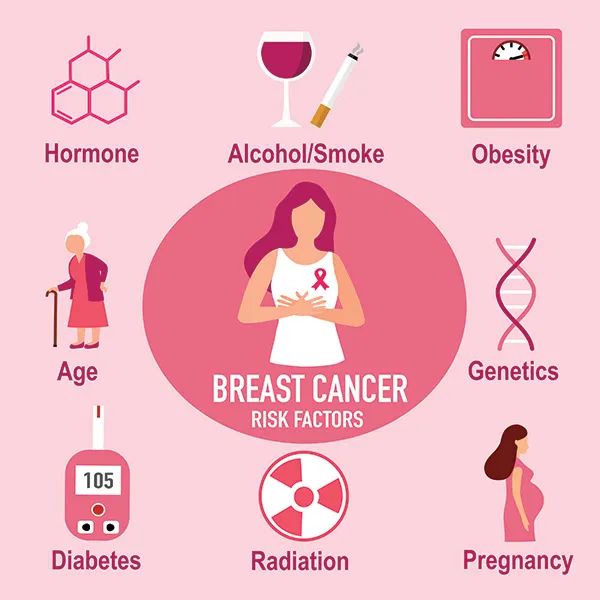Breast Cancer Awareness Month is observed globally to raise awareness about the disease and promote early detection. This annual campaign is crucial in educating people about the risks and consequences of breast cancer, which is one of the most common types of cancer affecting women worldwide.
The significance of this awareness month cannot be overstated, as it plays a vital role in reducing the stigma associated with breast cancer and encouraging people to take proactive steps towards prevention and early detection. The World Health Organization (WHO) has been at the forefront of this campaign, providing valuable resources and guidelines to help people understand the disease better.
According to WHO warnings, understanding the symptoms of breast cancer is essential for early detection and effective treatment. Some common symptoms to look out for include:
- Changes in breast shape or size
- Lumps or thickening in the breast or underarm area
- Dimpling or puckering of the skin
- Discharge or bleeding from the nipple
- Changes in the color or texture of the skin
These symptoms can be indicative of breast cancer, and it is essential to consult a doctor if any of these changes are noticed.
Early detection and treatment can significantly improve the chances of survival and reduce the risk of complications. Therefore, it is crucial to stay informed about the disease and take proactive steps towards prevention and early detection. By doing so, we can work together to reduce the burden of breast cancer and promote a healthier future for all.

Understanding Breast Cancer
Breast cancer is a type of cancer that originates in the breast tissue. It occurs when cells in the breast grow and multiply abnormally, forming a tumor. Breast cancer can occur in both men and women, although it is much more common in women. The disease can be classified into different types, including ductal carcinoma, lobular carcinoma, and inflammatory breast cancer, among others.
The global burden of breast cancer is significant, with millions of new cases diagnosed every year. According to recent statistics, breast cancer is the most common type of cancer in women worldwide, accounting for about 25% of all cancer cases. The incidence of breast cancer varies by region, with higher rates observed in developed countries.
Some key statistics on breast cancer cases worldwide include:
- Over 2 million new cases of breast cancer are diagnosed globally each year.
- Breast cancer is responsible for approximately 15% of all cancer-related deaths in women.
- The majority of breast cancer cases occur in women over the age of 50.
- Genetic factors, such as mutations in the BRCA1 and BRCA2 genes, can increase a person's risk of developing breast cancer.
Early detection of breast cancer is crucial for effective treatment and improved survival rates. When breast cancer is detected in its early stages, treatment options are more effective, and the chances of survival are higher. Regular breast self-exams, clinical breast exams, and mammography screenings are essential tools for detecting breast cancer early.
In addition to these methods, awareness and education about breast cancer risk factors, symptoms, and prevention strategies can also contribute to early detection. By understanding the importance of early detection and taking proactive steps to monitor their breast health, individuals can reduce their risk of developing advanced breast cancer and improve their chances of successful treatment and recovery.

WHO Warnings on Symptoms
The World Health Organization (WHO) has emphasized the importance of being aware of the symptoms of breast cancer. According to WHO, common symptoms of breast cancer include a lump or thickening in the breast or underarm area, a change in the size or shape of the breast, and a dimpling or puckering of the skin.
These symptoms can be an indication of breast cancer and should not be ignored. Other common symptoms include a nipple that becomes inverted or turns inward, and a change in the color or texture of the skin on the breast. It is essential to be aware of these symptoms to detect breast cancer at an early stage.
Some uncommon symptoms may also indicate breast cancer. These include:
- a new lump or thickening in the breast or underarm area that persists
- a change in the sensation of the breast, such as numbness or tingling
- a change in the appearance of the nipple, such as scaling or crusting
- a clear or bloody discharge from the nipple
- a change in the shape or size of the breast
It is crucial to consult a doctor if any of these symptoms are experienced.
The importance of not ignoring any symptom cannot be overstated. Early detection of breast cancer significantly improves the chances of successful treatment and survival. Ignoring symptoms or delaying medical attention can lead to the progression of the disease, making treatment more challenging and reducing the chances of survival.
It is also important to note that some symptoms may be similar to those of other conditions, and only a medical professional can provide an accurate diagnosis. Therefore, it is essential to seek medical attention if any unusual symptoms are experienced, regardless of how minor they may seem. By being aware of the common and uncommon symptoms of breast cancer and seeking medical attention promptly, individuals can reduce their risk of complications and improve their chances of successful treatment.

Combination of Symptoms to Watch Out For
When it comes to breast cancer, being aware of specific combinations of symptoms can be crucial for early detection and treatment. Certain symptom combinations are highly indicative of breast cancer, and it is essential to recognize these to seek medical attention promptly.
These combinations may include a palpable breast lump, changes in breast size or shape, and nipple discharge or retraction. Additionally, symptoms such as breast tenderness, skin changes, or lymph node swelling in the armpit can also be indicative of breast cancer when combined with other symptoms.
The combinations of symptoms can vary significantly among different individuals. For instance, some women may experience a lump in the breast along with changes in nipple appearance, while others may have breast pain and skin changes without any noticeable lump. Factors such as age, menopausal status, and overall health can influence the manifestation of symptoms.
Some common symptom combinations to watch out for include:
- A new lump or thickening in the breast or underarm area
- Changes in the size or shape of the breast
- Dimpling or puckering of the breast skin
- Nipple discharge or retraction
- Redness or scaliness of the breast skin
Genetic factors can also play a significant role in the manifestation of breast cancer symptoms. Women with a family history of breast cancer or genetic mutations such as BRCA1 or BRCA2 may exhibit different symptom combinations or experience symptoms at a younger age.
It is crucial to remember that each individual's experience with breast cancer can be unique, and not all women will exhibit the same combinations of symptoms. If you are concerned about any changes in your breast health or are experiencing a combination of symptoms, it is essential to consult with a healthcare professional for proper evaluation and diagnosis.

Taking Action and Prevention
When it comes to breast cancer, taking action and prevention are crucial for early detection and treatment. One of the most effective ways to detect breast cancer early is through screening methods. These methods include mammograms, clinical breast exams, and self-exams. Mammograms are specialized x-rays that can detect tumors that are too small to be felt, while clinical breast exams involve a healthcare professional checking the breast for any abnormalities.
Regular screening can help identify breast cancer in its early stages, when it is more treatable. It is essential for women to discuss their individual risk factors with their healthcare provider to determine the best screening schedule for them. Additionally, women should be aware of the benefits and limitations of each screening method to make informed decisions about their breast health.
Lifestyle changes can also play a significant role in reducing the risk of breast cancer. Some of these changes include:
- Maintaining a healthy weight through a balanced diet and regular exercise
- Limiting alcohol consumption and avoiding smoking
- Getting enough sleep and managing stress
- Eating a diet rich in fruits, vegetables, and whole grains
These lifestyle changes can help reduce the risk of breast cancer, as well as other diseases, and promote overall health and well-being.
For those diagnosed with breast cancer, having a support system in place is vital. This can include family and friends, as well as professional support groups and counseling services. Support systems can provide emotional support, help with daily tasks, and connect patients with valuable resources and information. Some examples of support systems include:
- Online forums and support groups
- Breast cancer organizations and advocacy groups
- Counseling services and therapy
- Local support groups and community resources
These support systems can help patients navigate their diagnosis and treatment, and provide a sense of connection and community during a challenging time.

Frequently Asked Questions (FAQ)
What are the most common symptoms of breast cancer?
Breast cancer is a serious health condition that affects millions of women worldwide. It is essential to be aware of the common symptoms to ensure early detection and treatment. One of the most noticeable signs of breast cancer is a new lump or thickening in the breast. This can be a cause for concern, especially if the lump is hard, painless, and has irregular edges.
Other signs of breast cancer include changes in the size or shape of the breast, nipple discharge or retraction, and skin changes such as dimpling or puckering. It is crucial to monitor these changes and consult a doctor if they persist or worsen over time. Some women may also experience pain or tenderness in the breast, although this is not always a symptom of breast cancer.
The following are some common symptoms of breast cancer that should not be ignored:
- A new lump or thickening in the breast or underarm area
- Changes in the size or shape of the breast
- Nipple discharge or retraction
- Skin changes such as dimpling, puckering, or redness
- Pain or tenderness in the breast
- Swelling or inflammation of the breast
It is essential to note that these symptoms can also be caused by other conditions, such as cysts or infections. However, if you experience any of these signs, it is crucial to consult a doctor for a proper diagnosis and treatment. Early detection and treatment of breast cancer can significantly improve the chances of survival and recovery. Regular breast exams and screenings can help identify any potential issues before they become severe.
How can I reduce my risk of developing breast cancer?
Maintaining a healthy lifestyle is crucial in reducing the risk of breast cancer. A well-balanced diet and regular exercise can help lower the risk of developing this disease. Eating a variety of fruits, vegetables, and whole grains can provide essential nutrients and antioxidants that help protect against cancer.
A healthy diet should include foods rich in fiber, vitamins, and minerals. It is also important to limit the intake of saturated fats, sugar, and processed foods. Exercise is also essential, as it can help maintain a healthy weight and reduce the risk of breast cancer.
Some of the key lifestyle changes that can help reduce the risk of breast cancer include:
- Engaging in regular physical activity, such as walking or jogging, for at least 30 minutes a day
- Eating a diet rich in fruits, vegetables, and whole grains
- Limiting the intake of saturated fats, sugar, and processed foods
- Maintaining a healthy weight through a combination of diet and exercise
- Limiting alcohol consumption to no more than one drink per day
In addition to diet and exercise, there are other lifestyle changes that can help reduce the risk of breast cancer. Getting enough sleep, managing stress, and avoiding exposure to toxins can all help lower the risk of developing this disease.
It is also important to be aware of the risk factors for breast cancer, such as family history and genetics. Women who have a family history of breast cancer should talk to their doctor about their risk and discuss ways to reduce it. By making healthy lifestyle choices and being aware of the risk factors, women can significantly reduce their risk of developing breast cancer.
Where can I find support if I or a loved one is diagnosed with breast cancer?
When diagnosed with breast cancer, it can be a challenging and overwhelming experience for both the patient and their loved ones. However, it is essential to know that support is readily available through various channels. One of the primary sources of support can be found through organizations that specialize in breast cancer care. These organizations often provide a wide range of services, including counseling, educational resources, and financial assistance.
Some notable organizations that offer support for breast cancer patients and their families include those that focus on research, advocacy, and patient support. These organizations can be found online, and they often have local chapters that provide community-based support. Additionally, many organizations offer online communities and forums where patients and their loved ones can connect with others who are going through similar experiences.
Online communities and forums can be a valuable source of support and connection for breast cancer patients. Some of the benefits of online communities include:
- Connecting with others who have been diagnosed with breast cancer
- Sharing experiences and advice with others who understand what you are going through
- Access to educational resources and information about breast cancer treatment and care
- Opportunities to participate in online support groups and discussions
These online communities can provide a sense of connection and support, which can be especially helpful for those who may be geographically isolated or have limited mobility.
Local healthcare providers specializing in breast cancer care can also be a vital source of support. These providers often have experience working with breast cancer patients and can offer guidance and support throughout the treatment process. They can also connect patients with local resources and support services, such as counseling, support groups, and educational programs. By reaching out to local healthcare providers, patients and their loved ones can access the support and care they need to navigate the challenges of breast cancer diagnosis and treatment.




